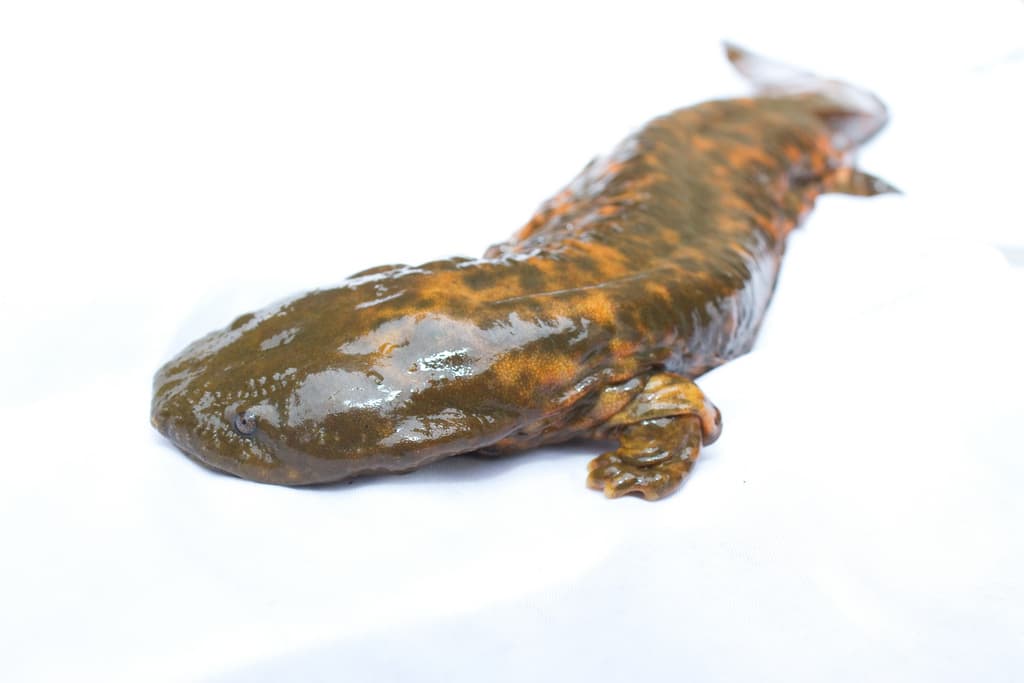The Plight of the Hellbender: North America’s Largest Salamander
Daniel Xu 01.08.14

The hellbender is an oddly-named species of giant salamander that is rapidly disappearing from its native habitat in North America. At around two feet long, hellbenders are the continent’s largest salamanders and are eclipsed by behemoths such as the five-foot-long Chinese giant salamander. Despite their size, hellbenders are fragile creatures and require specific conditions in order to thrive. These “habitat specialists” are very dependent on temperature, oxygen levels, and flow rate in the few rivers and streams that they inhabit. Because of these fussy habits, hellbenders are highly susceptible to changes in their environment and the Ozark hellbender subspecies was listed as endangered in 2011.
“They are really closely tied to their environment,” biologist Kim Terrell told National Geographic. “Unlike a lot of other salamanders, [hellbenders] breathe entirely through their skin.”
Terrell is working towards preserving this remarkable species as part of her research at the Smithsonian’s National Zoo. Deteriorating water quality in much of their habitat is causing a great deal of harm to the species. As if that were not enough, hellbenders are also developing a strange skin disease that baffles researchers. According to the Fish and Wildlife Service, the disease may be related to the chytrid fungus found commonly on certain species of frogs. After the disease was discovered, it ran rampant through the Missouri Ozark hellbender population and was even found in the specimens kept by the St. Louis Zoo. The zoo’s Ron Goellner Center for Hellbender Conservation is one of the leading facilities for hellbender research, and employees reported a nearly 75 percent death rate due to the disease. Of the Missouri Ozark hellbenders, experts believe only 590 still exist.
“We know that hellbenders are really sensitive to disease,” Terrell said. “And we find animals that have evidence of skin disease quite often in the wild. But we don’t know what’s causing it.”

The Missouri Department of Conservation reported that the species could disappear from the state in as little as 20 years, and Missouri is not the only place with a dwindling hellbender population. Biologists say that species once ranged from southwestern New York to northern Alabama, but now live in a fraction of their former range. Hellbenders may not be the prettiest of critters, but they play an important part in their ecosystems.
Wildlife agencies are now rushing to find a solution to reverse their decline, a plan that anglers can help with. Because anglers are very likely to find hellbenders when searching for bait, wildlife agencies ask that fishermen report locations where the creatures are found. Many states, such as Georgia, Missouri, and Maryland, have ongoing projects determined to learn more about these rarely seen creatures.
“One of the healthiest populations in North America is in the North Georgia mountains,” said Thomas Floyd, a wildlife biologist with the Georgia Department of Natural Resources. “… It’s really important for us to get baseline data so we know in the future how this salamander is doing.”

